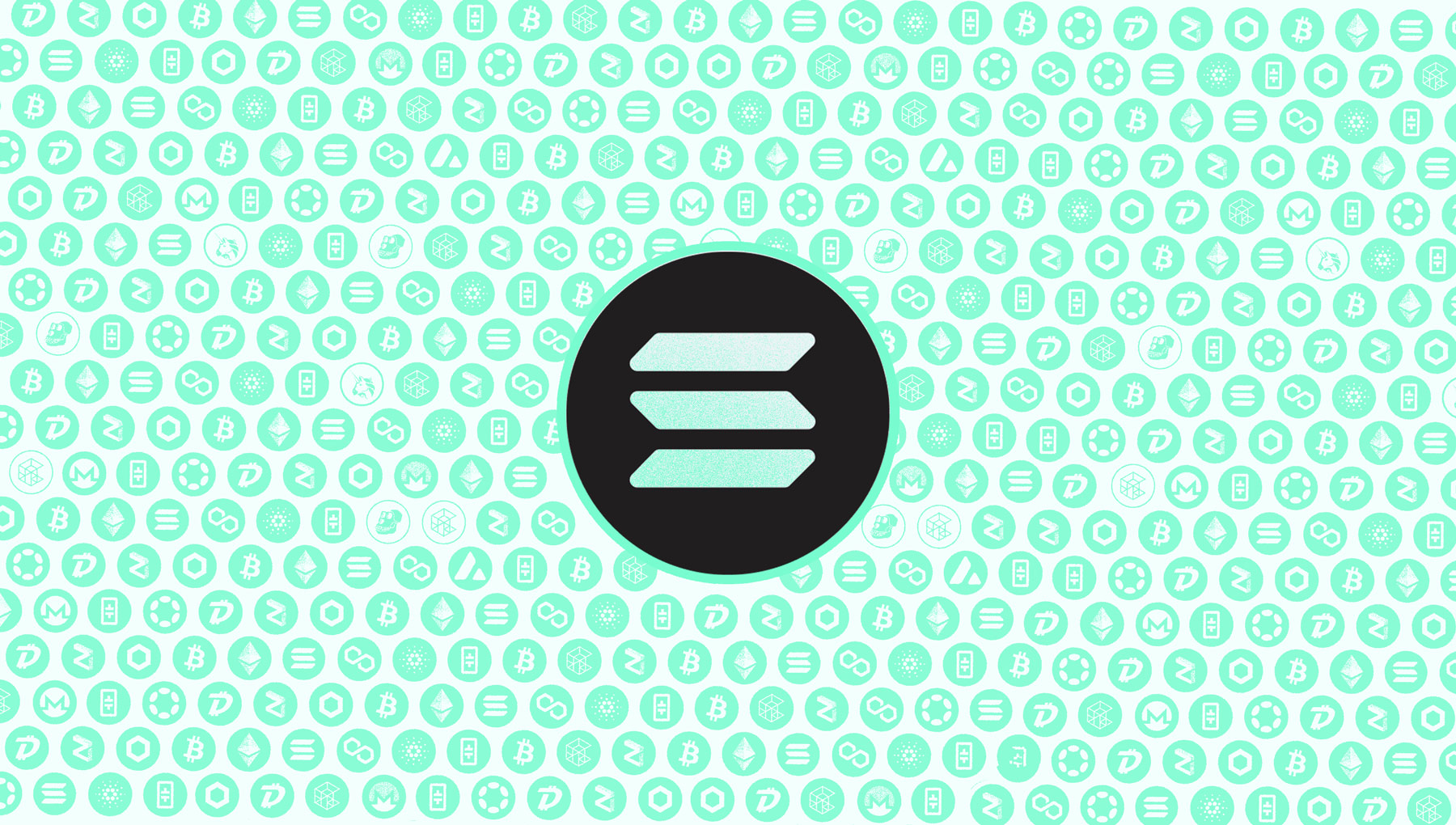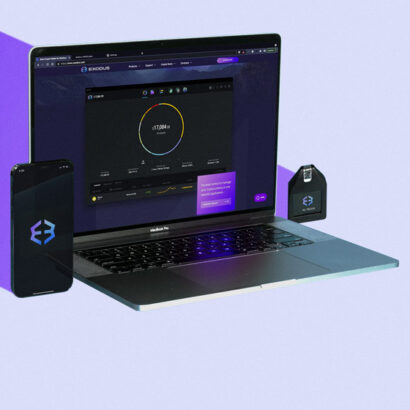Staking offers an easy way to earn a passive income and grow some of your crypto investments.
Staking crypto is similar to how you’d grow your money in a traditional savings account. Except unlike a traditional savings account, you can actually earn a decent return in 2022. And your stake helps to maintain and secure the blockchain.
If you’ve been around wealth-building experts you’ve heard of letting your money work for you. As an investor, you can grow your crypto portfolio in a few ways:
You can buy more cryptocurrencies
Get paid in crypto
Stake some of your crypto to earn rewards
Key Points
Staking means to committing a some of your crypto to participate in validating and securing the blockchain network.
- Only cryptocurrencies based on a Proof of Stake model can be staked.
For example: ETH, ADA, SOL, DOT and ATOM. - Staking lets you earn passive income on your crypto without the investment and infrastructure needed for mining.
- Risks of staking include: reduced liquidity, market volatility, and slashing.
- You can stake crypto directly by becoming a validator node, or indirectly by joining a staking pool or staking through an exchange or wallet.
- Ideally you should believe in the crypto project you’re staking on.
Jump to
Outline
- What is Crypto Staking?
- How Does it Work?
- How to Stake Crypto
- Top Proof-of-Stake Cryptos
- Benefits of Staking
- Risks of Staking
- Recommendations
- Summary
If you’ve been around wealth-building experts you’ve heard of letting your money work for you. Does the same standard apply to cryptocurrency investors?
Yes. As an investor, you can grow your crypto portfolio in several ways: you can buy more cryptocurrencies, get paid in crypto, or stake some of your existing crypto to earn rewards.
We’re focussed on staking.
What is staking?
Staking refers to committing your crypto assets to a blockchain network to contribute to the validation of transactions. When you stake your cryptocurrencies, you are locking them in a smart contract.
The staking requirements for each proof-of-stake protocol will vary including the minimum crypto you can stake and the minimum staking period. Other requirements include platform fees if you stake through a staking pool.
How does it work?
To understand staking, you’ll probably need to understand at a fairly high level how blockchain technology works.
A blockchain contains encrypted blocks of data that are chained in chronological order to form an immutable record.In the case of decentralized blockchains, nodes on the blockchain network are responsible for verifying transactions through a consensus mechanism; mainly through Proof-of-Work (PoW) or Proof-of-Stake (PoS) protocol.
In a Proof-of-Work blockchain protocol (no staking), the nodes within the blockchain network compete to solve a series of complex mathematical equations and are rewarded in crypto for validating and add new transactions to the blockchain.
For example: Bitcoin
Related: How Does Proof-of-Work Mining Actually Work?
However, in a Proof-of-Stake model, nodes commit some tokens to the cryptocurrency protocol. The protocol will choose validators to confirm blocks of transactions and add them to the respective blockchain.
Validators confirm these transactions through a consensus mechanism. The nodes agree on the present state of the blockchain as well as the valid transactions.
Each time a block is added, new coins are generated and distributed to the validators as staking rewards.
Five Ways to Stake Cryptocurrencies:
1
Use a Crypto Exchange
Exchanges such as Coinbase, Crypto.com, and Kraken can be used to stake cryptocurrencies.
Staking through an exchange is the simplest way to get started on crypto staking, as the exchange makes all the staking decisions and shares the rewards with you. Different exchanges will support the staking of different cryptocurrencies, so be sure to research the crypto you want to stake beforehand.
2
Use a Private Wallet (Recommended)
Exodus and Ledger are two of the best wallets that support staking.
Exodus is a popular free crypto wallet — one that we consistently recommend. You can stake Algorand (ALGO), Cosmos (ATOM), Cardano (ADA), Ontology (ONT), Solana (SOL), Tezos (XTZ), and VeChain (VEC). It all comes in a user-friendly interface and is available on multiple platforms including Android, iOS, and as a desktop app.
Trezor wallet also allows you to delegate Polygon (MATIC), ETH2, Cardano (ADA), Polkadot (DOT), Huobi, and Eco Chain, among others to a staking pool or a validator.
If you hold alt coins like Ethereum (ETH), Tezos (XTZ), Polkadot (DOT), Algorand (ALGO), Cosmos (ATOM), and Tron (TRX) you can stake them using the Ledger Live application while storing them securley in cold storage on one of their devices.
The Ledger Nano X is a solid choice. The forthcoming Ledger Stax looks great too.
4
Join a Staking Pool
A staking pool is another way you can stake your cryptocurrency. A validator can create a staking pool, where others contribute their cryptocurrency and stake it as a group. The rewards are then shared based on the crypto you stake.
Before you join a pool, it is a good idea to research the validator including how they operate, the validator’s track record, and the fees or commissions charged.
5
Create Your Own Staking Pool (Not an option for beginners)
If you have the equipment and infrastructure to build a staking pool, then you should. A staking pool can be expensive, for instance, to create a staking pool on Ethereum, you need a minimum of 32ETH, which is worth 99,061.76 (January 18, 2022).

Exodus
Exodus lets you do everything that you’re likely to want with your crypto including staking.
It’s non-custodial, private, secure, easy to set up and use and it’s free. They even have cold storage covered. For most people this is the one crypto wallet they can use for both day to day and secure long term HODLing.
Why you can trust us
Exodus is our most recommended crypto wallet of the past two years. We use it for staking, trading, and holding crypto in cold storage via their integration with Trezor.
Which Proof-of-Stake Cryptos can I Stake?
Staking is only possible with cryptocurrencies that operate on a Proof-of-Stake model.
It’s not possible to stake Bitcoin, because it operates on a Proof-of-Work.
These are a few good examples:

Ethereum
Ethereum currently operates on both the proof-of-work and the proof-of-stake models, with plans for upgrades that will make ethereum fully based on the proof-of-stake model.
If you have at least 32 ETH you can become a validator on the ethereum blockchain. As a validator you can store data, process transactions, and add new blocks to the Ethereum blockchain.
Don’t be discouraged if you don’t have the 32 ETH; you can still stake some of your ETH through a staking pool or an exchange. Coinbase is a popular exchange through which you can stake your ETH. The platform has no minimum amounts for staking ETH. Staking ETH is a way to keep Ethereum secure while earning returns on your ETH.
Note: if you don’t have the 32 ETH, you can still stake some of your ETH through a staking pool or an exchange. Coinbase is a popular exchange through which you can stake your ETH. Staking ETH is a way to keep Ethereum secure while earning returns on your ETH.
Read: What’s Next for Ethereum?

Solana
The Solana blockchain has grown in popularity amongst cryptocurrency investors due to its security, speed, and eco-friendliness. The Solana blockchain uses Proof of History and Proof of Stake technology.
If you hold Solana, you can participate in the Solana blockchain network by staking your coins.
You can stake your Solana (SOL) in several ways:
- Staking through a supported wallet such as Exodus
- Staking through an exchange such as Binance and FTX.
- Delegating your stakes to another validator
- By becoming a validator and running your own node
Read: Solana 101

Cardano
Cardano is an open source blockchain network designed to run smart contracts. It supports the ADA token which is used to pay transaction fees on the platforms and can be staked to keep the cardano blockchain secure and operations. There are plans to make ADA a governance token in future.
You can stake Cardano using platforms such as:
- Daedalus – a desktop crypto wallet developed by the Cardano team.
Once you download the wallet on your computer, you will receive a copy of the Cardano blockchain. You can therefore run your own Cardano node, thus becoming a full node (validator) on the platform. Alternatively, you can stake your ADA through the Daedalus staking pool. - Yoroi – Yoroi is a wallet designed as a browser extension on all major browsers
- Binance – Binance is a crypto exchange that also serves as a web wallet.
Staking ADA with Binance allows you to earn a high staking reward at 5.09% APY if you hold your ADA for a minimum of 30 days.
Read more: What’s so Great About Cardano?

Polkadot (DOT)
Polkadot blockchain launched in May 2020 as a protocol to allow communication between unrelated blockchains that would otherwise need intermediaries to share data. Polkadot supports its native coin, DOT, which is used for governance and staking. Staking DOT has an average annual reward of 14% on their stake.
To stake DOT, you need a minimum of 120 DOT, which is worth $3196.8 (January 18, 2022).
You can start staking DOT on platforms like:
- Binance is another popular cryptocurrency exchange and staking platform for DOT. Binance does not have a minimum staking amount, meaning you can stake whatever you want.
You can also be involved in DOT slot auctions or parachain auctions on Binance to earn rewards. - Kucoin exchange offers daily rewards for staking DOT.
The platform does not have a minimum locking period when staking through Kucoin’s Pool-X. - Bitfinex is a popular trading platform that started as a peer-to-peer trading platform. The platform supports staking DOT. Staking on bitfinex requires you to lock your funds for sometime.
The coins are held in a cold wallet, which is more secure compared to an online wallet.
Read: Polkadot 101

Cosmos (ATOM)
Also known as “the internet of blockchains”, you can stake ATOM on several platforms including:
- Exodus (Our pick)
- Atomic wallet
- Binance
- Kraken
- Ledger
- Coinbase
Read more about Cosmos: Everything You Ever Wanted to Know About ATOM
Tezos (XZT)
You can stake XZT on several platforms including:
Kraken, Binance, Atomic Wallet, Ledger, Exodus, and Coinbase.
If you’re holding XZT, you automatically become eligible to become a validator, but you will need to stake at least 8000 XZT and remain active and up-to-date on the network. Becoming a validator on the Tezos blockchain can be a complex process, which, if you are an average crypto investor, might discourage you from staking your XZT.
Tezos offers the option to become a delegator where you select a validator to whom you provide some of your tokens. This means you won’t need to be regularly online or keep a node running.
If you’re going to delegate to a self-baker (validator) you need to know what to look for when choosing a validator to reduce the risk of losing your coins. If you don’t know how to choose a validator, it’s probably best to start off by staking through an exchange such as Kraken or Coinbase.
Benefits of Staking
For most people staking is about earning.
Staking can be a profitable and passive way of growing your holdings. Staking rewards come with annual percentage yields (APY) of around 5-20% per year.
Support a cryptocurrency you believe in.
Decentralized blockchain rely on users to keep the system running and secure by validating transactions on the network.
You don’t need any equipment to stake crypto.
Crypto mining on the other hand requires sophisticated equipment like miners as well as the energy needed to run them. This is out of reach for the average retail investor.
Crypto staking (PoS) uses less energy than mining and Proof-of-Work (PoW).
Solving complex mathematical equations (PoW) requires a heavy energy investment, with most miners relying on energy generated using fossil fuels. This is good for security but it is not as environmentally friendly.
Considerations
While crypto staking can be a rewarding way to build your cryptocurrency portfolio and support the cryptocurrency you believe in, it comes with a few concerns that you should be aware of.
Market volatility
Cryptocurrencies are synonymous with volatility. While crypto staking offers higher annual yields, your staked crypto is still vulnerable to market changes. This means that falling prices can minimize the profit you make from staking, or sometimes, cause losses. Depending on the cryptocurrency, there may be a lockup period, which makes it impossible to sell your crypto until the lockup period ends.
Smart contract risks
Some smart contracts within certain staking pools are not infallible, which is a risk to you when you omit some of your crypto assets through these staking pools.
Fees
If you stake your coins through a crypto exchange or a staking pool, you will have to pay some fees or commission, which is usually a percentage of your staking rewards. The exact fees will depend on the exchange or the staking pool terms.
Slashing
If you are staking independently, you might be penalized where a portion of your staked coins are taken as a penalty for performing poorly or dishonestly. Even if you are staking through a staking pool, you should stake with a validator who has a record of performing well to avoid the risk of losing your coins due to slashing.
Should You Stake Your Crypto?
To stake or not to stake? Whether you should include crypto staking in your cryptocurrency investment strategy is a question only you can answer. However, since this can be a confusing decision when trying to balance the pros and cons of crypto staking, here are some questions to determine where staking stands in your crypto investment strategy:
Will you need to access it or may need to sell or trade it short term?
Depending on the cryptocurrency, your coins may be locked for a certain period, during which you can neither sell nor trade them. If you want (or need) access to your crypto on short notice the best choice is usually not to stake it.
Do you believe in the project?
Cryptocurrencies such as bitcoin have risen to the top of the rank because they have a community that believes in them. Investing in cryptocurrency should come after research and understanding what a crypto project is about.
If you believe in a project staking is also a way to show your support.
Conclusion
Staking can be a good way to earn a decent return from your crypto assets.
It might offer a way to participate in the governance and running of blockchain projects that you believe in.
As with all investments, research is critical. Focus on mitigating your risks by understanding what is involved in staking, the risks, rewards, and pitfalls to avoid when staking.
One thing to look out for: if there is an extremely high APY, it can usually be a bad sign. If something looks to good to be true…



